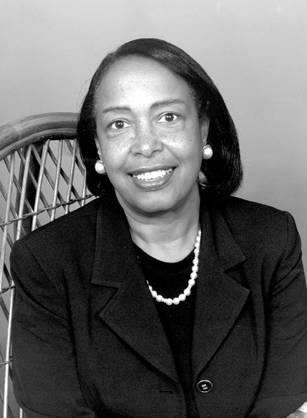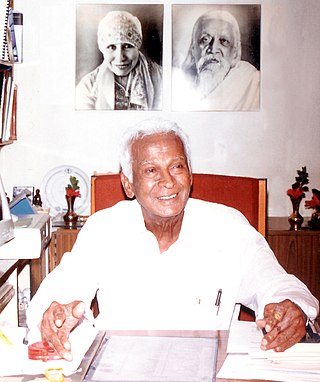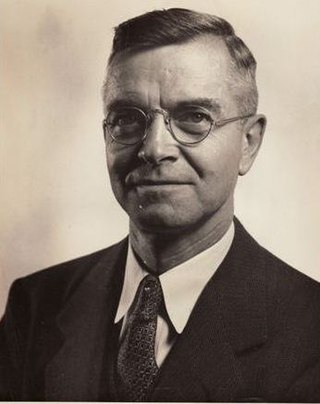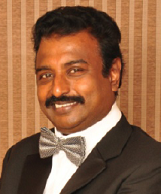Related Research Articles

Sankara Nethralaya is a non-profit missionary institution for ophthalmic care headquartered in Chennai, India. In the name "Sankara Nethralaya", "Sankara" is a reference to Lord Shiva and "Nethralaya" means "The Temple of the Eye". Sankara Nethralaya has over 1000 employees and serves around 1500 patients per day, performing over 100 surgeries daily. The annual revenue as per the taxes is close to US$100 million.

Patricia Era Bath was an American ophthalmologist and humanitarian. She became the first female member of the Jules Stein Eye Institute, the first woman to lead a post-graduate training program in ophthalmology, and the first woman elected to the honorary staff of the UCLA Medical Center. Bath was the first African-American to serve as a resident in ophthalmology at New York University. She was also the first African-American woman to serve on staff as a surgeon at the UCLA Medical Center. Bath was the first African-American woman doctor to receive a patent for a medical purpose. A holder of five patents, she founded the non-profit American Institute for the Prevention of Blindness in Washington, D.C.

Aravind Eye Hospitals is a hospital chain in India. It was founded by Dr. Govindappa Venkataswamy at Madurai, Tamil Nadu in 1976. It has grown into a network of eye hospitals and has had a major impact in eradicating cataract related blindness in India. As of 2012, Aravind has treated nearly 32 million patients and performed 4 million surgeries. The model of Aravind Eye Care hospitals has been applauded and has become a subject for numerous case studies across the world.

Govindappa Venkataswamy, popularly known as Dr V., was an Indian ophthalmologist who dedicated his life to eliminate needless blindness. He was the founder and former chairman of Aravind Eye Hospitals. He is best known for developing a high quality, high volume, low-cost service delivery model that has restored sight to millions of people. Since inception, Aravind Eye Care System has seen over 55 million patients, and performed over 6.8 million surgeries. Over 50% of the organisation's patients pay either nothing or highly subsidised rates. Its scale and self-sustainability prompted a 1993 Harvard Business Case Study on the Aravind model.
Divya Prabha Eye Hospital is in Trivandrum, capital of Kerala, India.
Suseela Prabhakaran is an Indian ophthalmologist and chief ophthalmic surgeon at Divya Prabha Eye Hospital in Trivandrum, India. She started her career as a lecturer in ophthalmology in the Department of Medical Education at the state government of Kerala.

The Government Medical College, Thiruvananthapuram, also known as Trivandrum Medical College, is a public medical college in Thiruvananthapuram, Kerala, India. Founded in 1951, it was inaugurated by Prime Minister Jawaharlal Nehru and is Kerala's first ever Medical College.

Sanduk Ruit is one of the famous eyes doctor of nepal, pronounced[ˈsʌndukrui̯t], born September 4, 1954) is an ophthalmologist from Nepal who was involved to restore the sight of over 180,000 people across Africa and Asia using small-incision cataract surgery.
The Himalayan Cataract Project (HCP) was created in 1995 by Dr. Geoffrey Tabin and Dr. Sanduk Ruit with a goal of establishing a sustainable eye care infrastructure in the Himalaya. HCP empowers local doctors to provide ophthalmic care through skills-transfer and education. From its beginning, HCP responds to a pressing need for eye care in the Himalayan region. With programs in Nepal, Ethiopia, Ghana, Bhutan and India they have been able to restore sight to over 1.4 million people since 1995.
Noshir Minoo Shroff is an Indian ophthalmologist notable for pioneering intraocular lens implantation surgery in India. He was awarded the Padma Bhushan in 2010 by the Indian government for his services to medicine.
Jawahar Lal Kaul is an Indian social worker and the founder of the All India Conference of the Blind, an NGO working towards the rehabilitation of the blind. He was honoured by the Government of India, in 2014, which bestowed on him the Padma Shri, the fourth highest civilian award, for his services to the field of Social Work.

Victor Clough Rambo was an American medical missionary and ophthalmologist who worked in India from 1924 to 1974 for the United Christian Missionary Society, of which the former Foreign Christian Missionary Society became part in 1920. In India, Rambo served as the medical director of the Christian Hospital Mungeli and initiated the development of eye camps, groups of medical surgeons that visited towns, set up cataract removal stations, and restored sight to the partially blind through eye surgeries. Under Rambo's leadership, the hospital conducted over 150 eye camps in over 25 villages. It is estimated that the implementation of these eye camps helped restore sight to over 40,000 patients.
Dorairajan Balasubramanian, popularly known as Professor Balu, is an Indian biophysical chemist and ocular biochemist. He is a former President of Indian Academy of Sciences and a director of research at the Prof. Brien Holden Eye Research Centre of L. V. Prasad Eye Institute, Hyderabad. A recipient of the National Order of Merit (France), Balasubramanian was honored by the Government of India, in 2002, with the fourth highest Indian civilian award of Padma Shri.

Yog Raj Sharma is an Indian ophthalmologist and ex-chief of Dr. Rajendra Prasad Centre for Ophthalmic Sciences of the All India Institute of Medical Sciences (AIIMS), New Delhi, the apex body of the National Programme for the Control of Blindness, a Government of India initiative to reduce the prevalence of blindness in India. He is the Chairman of the Task Force on Prevention and Control of Diabetic Retinopathy Group and the Co-Chairman of the National Task Force on Prevention of Blindness from Retinopathy of Prematurity under the Ministry of Health and Family Welfare of the Government of India. An advisor to the Ministry of Health and Family Welfare, India. Sharma was honored by the Government of India in 2015 with Padma Shri, the fourth highest Indian civilian award. In 2005, Yog Raj Sharma's published article on "Pars plana vitrectomy vs scleral buckling in rhegmatogenous retinal detachment" in Acta Ophthalmologica Scandinavica and in November 2021, American society of retina specialists cited it as top 100 publications on retinal detachment management in the last ~121 years. Of these top hundred publications, only nineteen countries contributed, three of the contributing countries were Asian and from India this study was the sole contribution. Dr Sharma called it 'the singular biggest achievement of his career" in an article published in Daily Excelsior, Jammu in December 2021.

Mohsin Wali is an Indian cardiologist and a former honorary physician to R. Venkataraman and Shankar Dayal Sharma and the serving physician to Pranab Mukherjee. His first assignment as a physician to the President of India was with R. Venkataraman, at the age of 33, making him the youngest physician to serve an Indian President. He is the only physician to have served three Presidents of India. The Government of India awarded him the fourth highest civilian honour of the Padma Shri, in 2007, for his contributions to Indian medicine.

Community ophthalmology was described as a new discipline in medicine promoting eye health and blindness prevention through programs utilizing methodologies of public health, community medicine and ophthalmology in 1978. This new discipline was first proposed by Dr. Patricia E. Bath in 1978 after observations of epidemics rates of preventable blindness among under-served populations in urban areas in the US as well as under-served populations in so called third-world countries.

Doheny Eye Institute established in 1947, is a nonprofit ophthalmic research institute. The doctors and scientists of Doheny Eye Institute undertake basic and clinical research, a role known as a physician-scientist.

Sundaram Natarajan is an Indian ophthalmologist. In 2002, he started a free clinic in Dharavi, a slum in Mumbai, and treated more than 8,000 people. He has also held free camps in various other suburbs of Mumbai such as Mankhurd and Govandi to treat the economically poor. In 2016, he also held a camp in Kashmir to operate and cure the victims of pellet gun firings.

Bharti Kashyap Navigating Health Care Reform in Jharkhand From a crusader against blindness to Cervical cancer activist the extraordinary success and figures of cervical cancer eradication campaign, eye donation awareness campaign, diabetic retinopathy screening, “Jyot Se Jyot Jalao” campaign and vision protection campaign being run in Jharkhand over the past three decades by Dr. Bharti Kashyap is a testament to the fact that she has carried out the campaigns with full devotion and dedication and has successfully achieved the set targets. Nari Shakti puruskar Awardee Dr Bharti Kashyap is an Indian ophthalmologist and great family and child welfare social worker in Jharkhand, also known as vision and Janni suraksha Lady. She is honoured with Nari Shakti Puraskar in 2017 by hon'ble president of India and is a five-time recipient of the National IMA Award for the welfare of the underprivileged section of society
References
- ↑ "Jlrohatgi Hospital". jlrohatgihospital.org. Retrieved 25 March 2014.
- ↑ "J. L. Rohatgi Hospital & Jawaharlal Rohatagi Smarak Netra ..." sehat.com. Retrieved 25 March 2014.
- ↑ "Dr Jawahar Lal Rohatgi Memorial Eye Hospital in Kanpur - G". grotal.com. Retrieved 25 March 2014.
- ↑ "J L Rohatgi Hospital". hospitalkhoj.com. Archived from the original on 11 April 2011. Retrieved 25 March 2014.
- ↑ "J L Rohatgi Hospital". kanpuria.com. 22 December 2013. Archived from the original on 27 December 2013. Retrieved 25 March 2014.